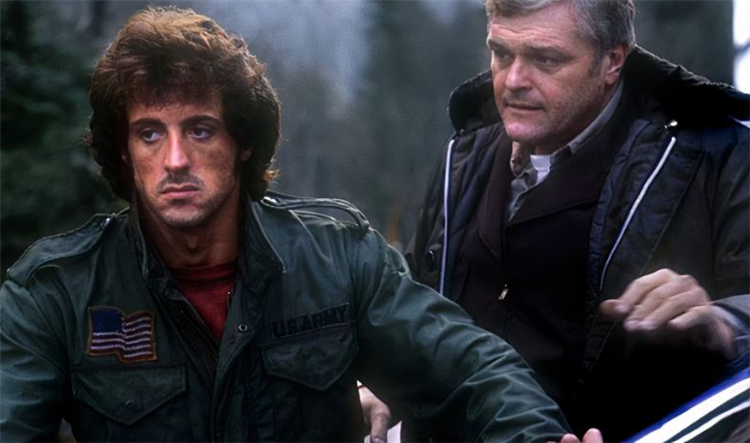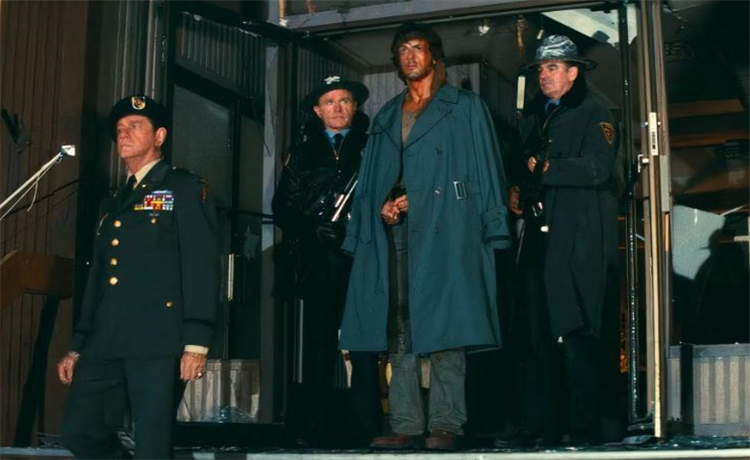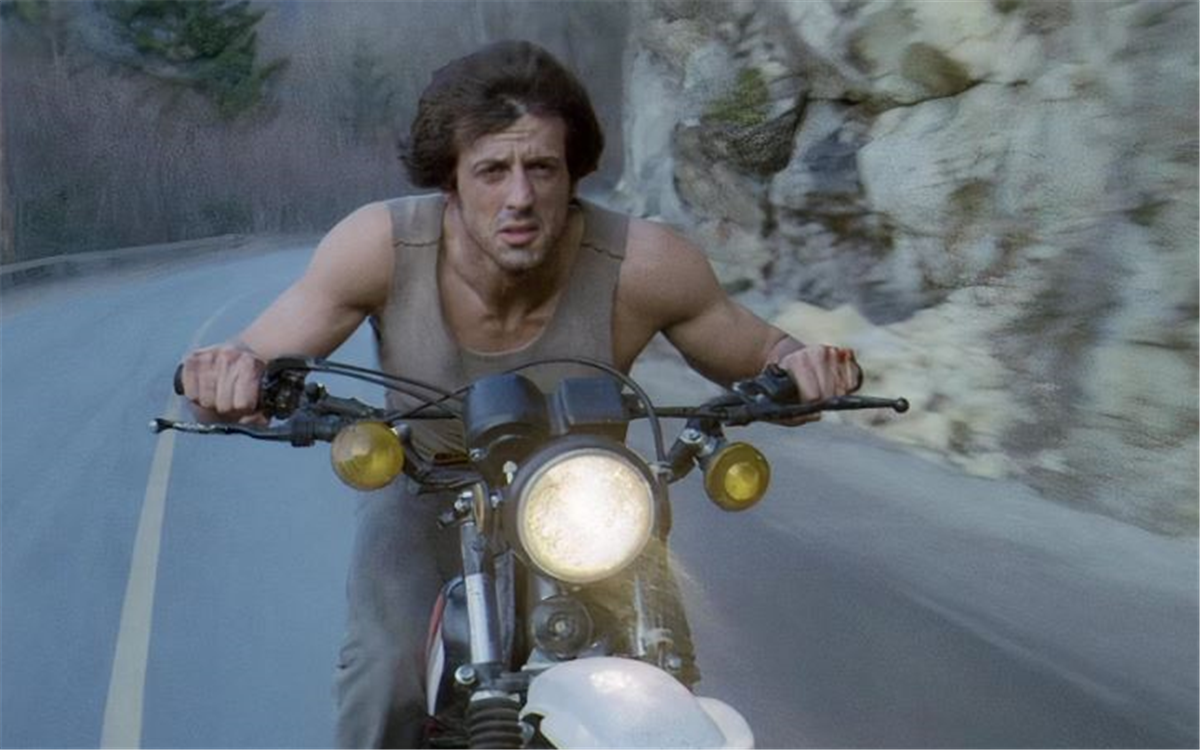Sylvester Stallone has come a long way. Nowadays, he is the Dapper Don of Tulsa, rarely needing to throw a punch or fire a weapon. His lieutenants do the job for him. However, he was a field guy in the ‘70s, 80s, and ‘90s. The actor came to prominence with the Rocky franchise, but the Rambo franchise truly made him a global star, thanks to a broader appeal that extended beyond the confines of the boxing ring.
Based on David Morrell’s novel, the latter franchise’s first installment, First Blood, was a massive success, critically and commercially. It was the first Hollywood blockbuster to premiere in China and held the record for the highest number of tickets sold for an American film until 2018. Since then, the Chinese market has been a reliable gold mine for major studios.
The film also spawned sequels, an animated television series, a comic series, a novel series, and video games. But all this wouldn’t have been possible if Stallone and director Ted Kotcheff had gone with the original ending.
A War Veteran Fights Against Police Brutality in First Blood
First Blood is best remembered for the action, but it offers a sly commentary on various serious political and social issues, earning an additional reputation as an aggressively peculiar and fanciful cinematic vision.
Events kick off with Vietnam War veteran John Rambo (Sylvester Stallone) heading to a lake house to look for an old war buddy only to learn that the man died of cancer after being exposed to Agent Orange (a dangerous chemical used by the American military during the war). Through this introduction, the film reminds audiences how veterans often get neglected after serving their country.
Rambo himself isn’t doing well either. After being shipped to the front lines, where he experienced the horrors of jungle warfare, with endless days of filthy drudgery punctuated by instances of unthinkable savagery, he has been relegated to a state of homelessness. With nowhere to go, he wanders off to the fictional town of Hope, Washington. Unlucky enough to bother Rambo at this stressful juncture is the stony-eyed Sheriff Will Teasle, who has no idea what he’s getting himself into.

Brian Dennehy is well-cast as the abrasive, intimidating martinet who believes his job description includes chasing away drifters, so he orders Rambo to leave. Not the kind of person to be told what to do by someone who isn’t his commanding officer, he steps out only to return, forcing Teasle to arrest him and plant several charges on him.
From there, a police brutality angle is introduced. At the station, Teasle’s deputies abuse Rambo, triggering his PTSD and causing him to beat them all up before ducking into the woods.
What follows is the kind of one-man-army battle that would make Batman proud. In the forest, Rambo uses guerilla tactics to subdue the dozens of cops who are looking for him, without directly killing any of them (although one of them dies after falling off a helicopter, courtesy of a nerve-rattling sequence).
The former Green Beret is shown to be reasonable, pleading with the officers for a sensible resolution, but they, for their part, are shown to be unreasonable, so he continues punishing them. So good is Rambo that The Washington State Patrol and Washington National Guard are called in to assist.
His former mentor and former commanding officer, Colonel Sam Trautman, is also brought in to help with the dialogue part, but Rambo refuses to surrender, insisting “they drew the first blood.” We know Rambo won’t get away with it. Still, a**-whooping was never so much fun.
Rambo’s Original Ending Was Almost Faithful to the Novel
Towards the end of the film, director Ted Kotcheff observes with plaintive warmth and fragility the emotional turbulence visited upon Rambo after his actions. Having had enough, he considers killing Teasle, but Trautman talks him out of it.
Rambo then goes on a lengthy monologue in which he vents about the horrors of the battlefield and the resulting trauma. He laments how he has been affected by watching friends die, only to be treated poorly when returning home. He also goes further to complain about the lack of employment opportunities. After that, he breaks into tears, surrenders, and is taken into custody.
The ending is indeed powerful. In just a few sentences, Rambo highlights everything wrong with the military experience. Interestingly, this wasn’t the original ending. After running circles around the police, Rambo was meant to die by suicide.
In an interview with Entertainment Weekly, director Ted Kotcheff affirmed that John Rambo was meant to die in the original ending, and there was a good reason for that.

“The film was basically conceived as Rambo’s tragedy, that mirrored the tragedy of so many of the veterans that I talked to. I met guys that actually later on killed themselves. His tragedy mirrored their tragedy, and how they came to this sad conclusion to kill themselves.”
Fearing that the idea of an ‘80s action hero killing himself would be too much for public sensibilities, Kotcheff and Stallone switched things up, the rationale being presumably that an arrest would be considerably less upsetting than suicide.
The First Blood DVD commentary reveals that the ending we all know was shot much later, in March 1982, after the original ending was deemed unsatisfactory. Before that, the film had been deemed so bad that it was trimmed from a Scorsese-like running time of three and a half hours to 90 minutes. The movie’s Ultimate Edition DVD, released in 2004, includes the “never-before-seen” alternate ending in which the protagonist commits suicide.
There Would Be No Rambo Franchise if Creative Liberties Hadn’t Been Exercised
The original ending is actually closer to that of the novel. On the pages, the events culminate in a magnificently manic confrontation. Teasle surprises Rambo as he is hiding and shoots him in the chest, but he too is wounded in the abdomen by a return shot from the protagonist. Rambo then tries to flee town, but Teasle pursues. As the National Guard arrives, Rambo tries to commit suicide but figures it’d be better to die fighting. He kills Teasle, only to get shot in the head by Trautman.
As intriguing as the original ending is, it would have ruined the franchise. None of the novels, animated productions, or video games would have happened. Most importantly, none of the iconic sequels — all distinguished by their keen dissection of geopolitical issues — would have been made.
First Blood: Part II touches on the touchy POW issue that the American government had been called out for, Rambo III covers the dynamics surrounding the Mujahideen (which later birthed Al Qaeda) and the Soviet occupation of Afghanistan. Then there is Rambo IV, which tackles the guerrilla menace in Burma.
That said, though we’re thankful for the ending we got, the original version offers its own rich rewards, and feels more intellectually bulky. There is no doubt that the movie would still have been good, and that Stallone would have still become one of the world’s biggest actions stars. After all, his rival Arnold Schwarzenegger rarely did sequels to any of his hit films and still had an illustrious career.
It could also be argued that none of the sequels are as good as First Blood, hence a world without them wouldn’t have looked too bad. Such a debate might fill a thread, but when all factors are considered, fans can agree that the right choice was made.
